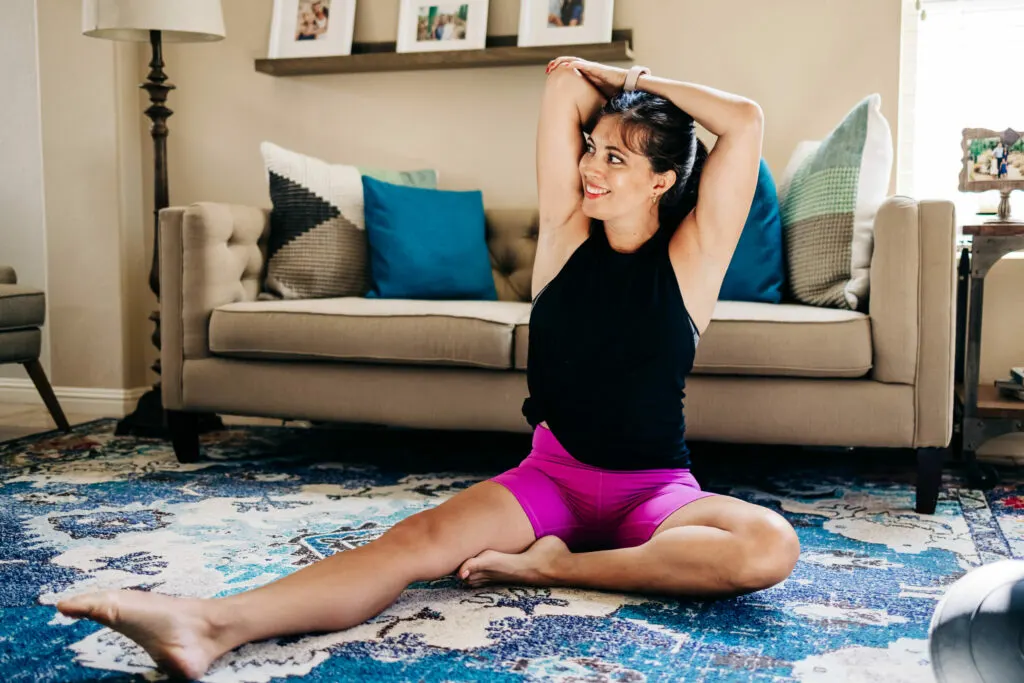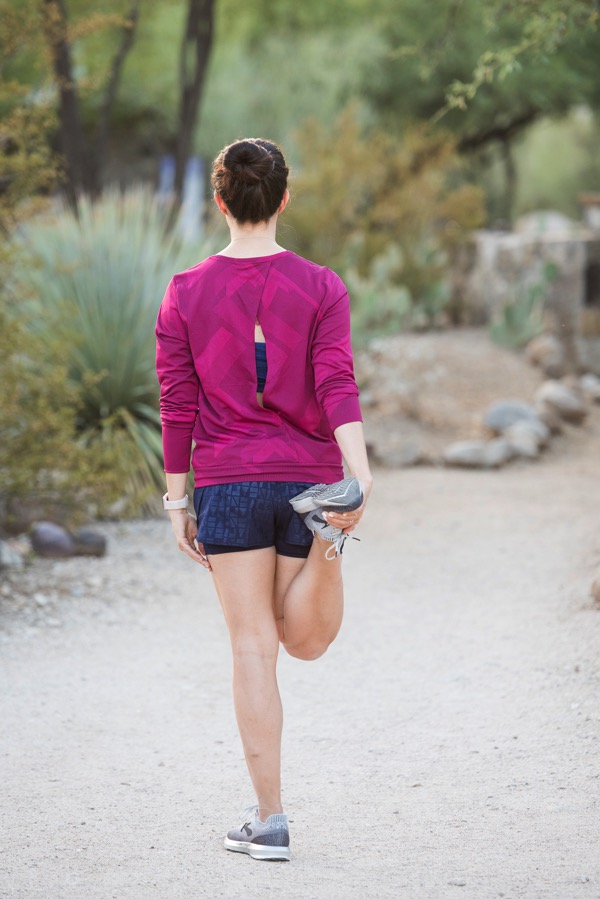Answering the favored query about how lengthy it is best to stretch for a run.
Hello associates! I hope that you just’re doing nicely and having fun with the day!
For immediately’s publish, I wished to ask a typical query, particularly because it’s the brand new yr and lots of of my associates on the market are getting again to their working routines or beginning new ones: how lengthy do you have to stretch for a run?
Right here’s the deal about stretching: science and opinions are combined. You don’t *have* to stretch, however for many individuals, they discover that it warms them up (it prepares the muscle mass for train and will increase coronary heart charge and tissue temperature), they could be much less more likely to get injured, and so they could discover that it mentally helps them get within the sport.
How lengthy do you have to stretch for a run
In relation to stretching for a run, the really helpful period can differ relying on whether or not you’re doing dynamic or static stretching. Usually, dynamic stretching is greatest accomplished earlier than a run or any sort of exercise, whereas static stretching is more practical after a run.
Dynamic Stretching Length:
Earlier than a run, 5 to 10 minutes of dynamic stretching is normally enough along with any foam rolling. The sort of stretching includes transferring your muscle mass and joints by their full vary of movement, which helps to heat up the physique, improve coronary heart charge, and improve blood movement to the muscle mass. It prepares the muscle mass for the extreme exercise to come back may help cut back the chance of damage.
I actually like dynamic stretching since you’re working by full vary of movement; it may assist with altered motion patterns since you’re stretching out muscle mass which may be tight or underused. It feels good and energizing earlier than any sort of exercise!
Static Stretching Length:
After a run, I sometimes advocate 5 to 10 minutes of static stretching along with any foam rolling. This includes holding stretches for 20 to 30 seconds per muscle group. Static stretching helps to calm down the muscle mass, enhance flexibility, and cut back muscle stiffness post-exercise. It aids in cooling down the physique, your coronary heart charge will lower, and it may assist promote muscle restoration.
Variations Between Dynamic and Static Stretching:
Dynamic stretching is energetic, with actions like leg swings and strolling lunges that mimic the exercise of working. It’s designed to extend physique temperature, enhance vary of movement, and get the blood flowing.
Dynamic stretching
A few of my favourite dynamic stretches earlier than a run:
Leg Swings
Advantages: Improves vary of movement, warms up the hip flexors.
Steps:
Stand on one leg with the opposite leg swinging ahead and backward.
Preserve the motion managed and regular.
Change sides after 10-15 swings.
Strolling Lunges
Advantages: Engages a number of muscle teams, enhances blood movement.
Steps:
Step ahead together with your left leg, decreasing your physique right into a lunge.
Push again up and repeat together with your proper leg.
Proceed for 10-12 reps on every leg.
Arm Circles
Advantages: Loosens up the shoulder muscle mass, will increase higher physique vary of movement.
Steps:
Lengthen your arms out to the edges.
Make small circles, progressively growing the scale.
Carry out for 20-30 seconds, then change instructions.
Standing Hamstring Stretches
Advantages: Stretches the hamstrings!
Steps:
Stand with toes shoulder-width aside. Along with your left hand, hinge ahead and faucet in the direction of your proper shin or ankle. Stand and repeat on the opposite aspect. Alternate for 20-30 seconds.
Static stretching
Static stretching, then again, includes holding a place with out motion. It’s extra about elongating the muscle mass and bringing the physique again to a resting state, which helps to alleviate rigidity and forestall soreness.
Calf Stretch
Advantages: Stretches your calf muscle mass, aids in post-run restoration.
Steps:
Stand going through a wall, place your fingers on it.
Step your left leg again, holding it straight, and bend your proper knee.
Maintain for 20-30 seconds, then change sides.
Quad stretch:
Advantages: Helps stretching the entrance of the thighs, which will be tight after working
Steps:
Begin standing. Bend one leg and attain again for the toes on that aspect. Convey your knee down, tuck your hips beneath, and maintain onto a wall or countertop for stability. Maintain for 20-30 seconds, then change sides.
Hamstring Stretch
Advantages: Helps in stretching the again of your thighs, enhances flexibility.
Steps:
Sit on the bottom, lengthen your left leg, and attain in the direction of your ankle or toe.
Maintain for 20-30 seconds, then change sides.
Hip Flexor Stretch
Advantages: Opens up the hip flexors, which are sometimes tight after working.
Steps:
Kneel in your left knee, proper foot in entrance at a 90-degree angle.
Push your hips ahead gently.
Maintain for 20-30 seconds, then change sides.
So inform me, associates: how usually do you stretch??
Any ideas for runners who’re getting again into the sport?
xoxo
Gina
For extra, take a look at these tips for running faster and 10 core muscle stretches.
Trending Merchandise

FITINDEX Foam Roller for Back Pain, 5-Speed Vibrating Foam Roller Muscle Massage, Exercise, Yoga, Muscles Deep Tissue, Physical Therapy, Muscle Recovery, Neck, Leg, Rechargeable, Gray

Resistance Bands for Working Out with Workout Bands Guide. 4 Booty Bands for Women Men Fabric Elastic Bands for Exercise Bands Resistance Bands for Legs Bands for Working Out Hip Thigh Glute Bands Set

FITNE Green Tea Herbal Honey Lemon With Garcinia Senna Infusion Gentle Detox Cleanse High Antioxidant No Calories Stevia Sweetener, 15 Tea Bags

Sunny Health & Fitness Row-N-Ride Squat Assist Trainer, Foldable & Easy Setup Exercise Equipment w/Adjustable Resistance, Home Gym Training Machine for Arm, Glute & Leg Workout, Optional in Colors

FITNE Black Currant Herbal Green Tea Fruity Garcinia Senna Infusion Gentle Detox Cleansing Boost Antioxidant Wellness Tea No Calories, 15 Tea Bags

UNMERA Squat Wedge Block 2PCS Non Slip Professional Squat Ramp,Squat Platform for Heel Elevated Squats and Calf Raises











